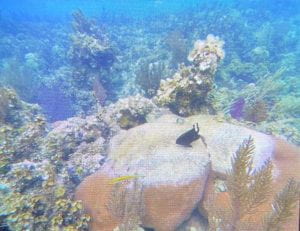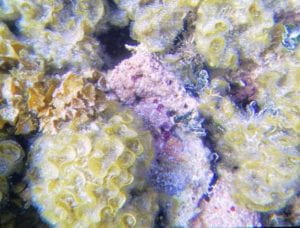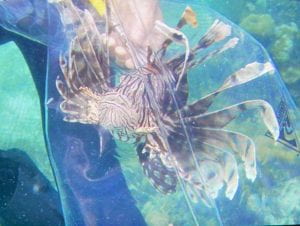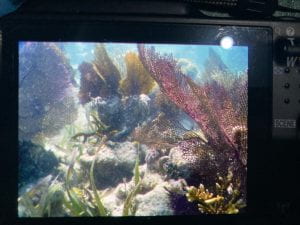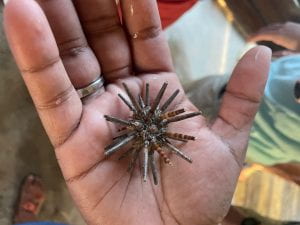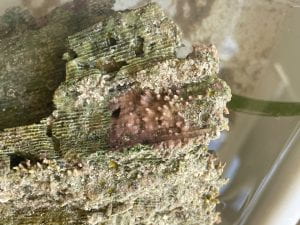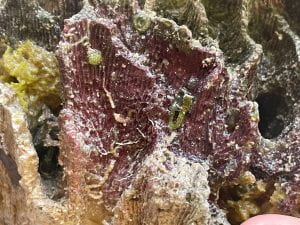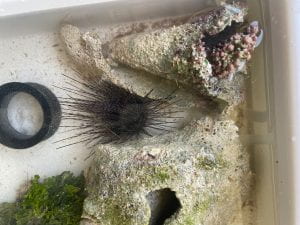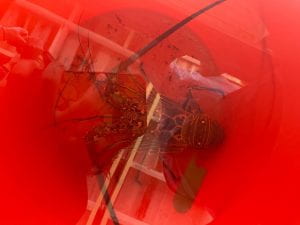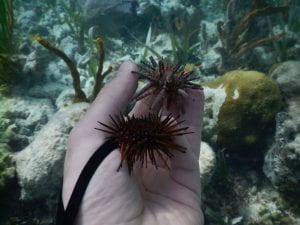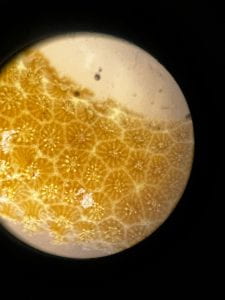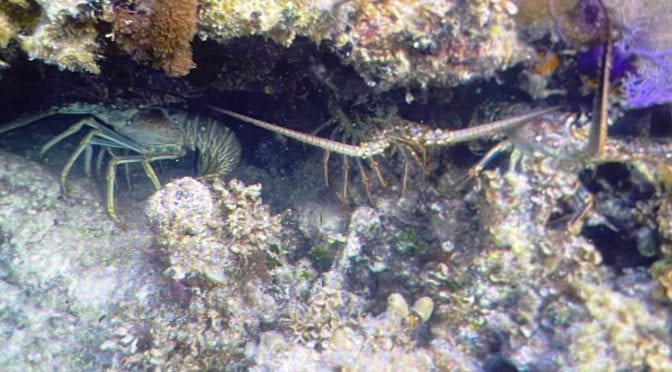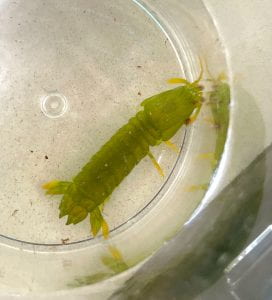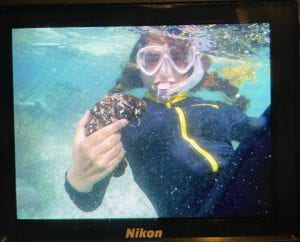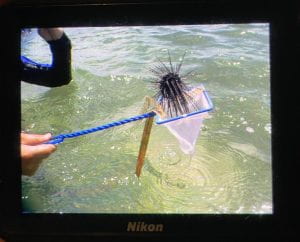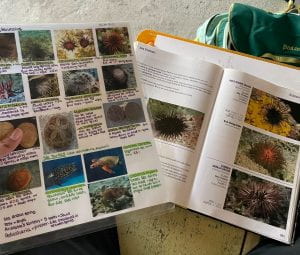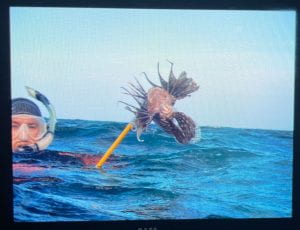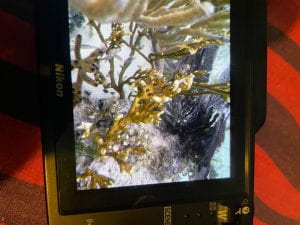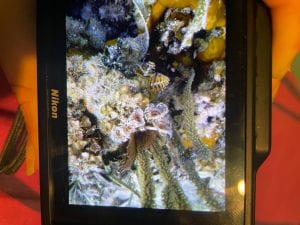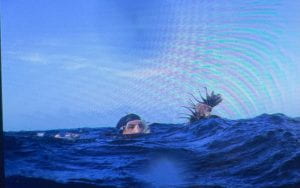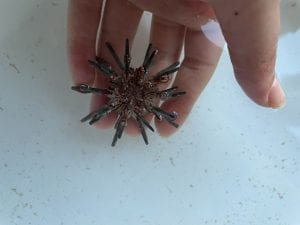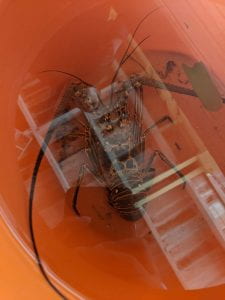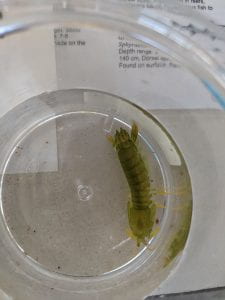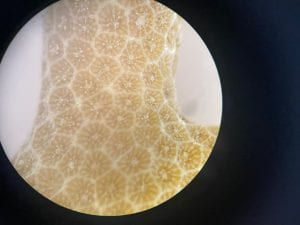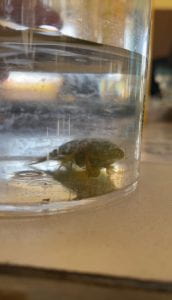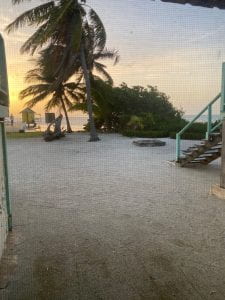Hi everyone!
I’m so glad to say that our team has actually gotten so much better at using our tools out in the field! We went out today to two more coral reef patches and were able to collect data the first time it took 40 minutes and the second time it took 30 minutes, both of which are a great improvement from yesterday’s hour long data collection at a single patch! I was also super glad to see some of the Tunicates Sophie talked about in her taxon lecture last night. Considering how small they are I thought I wouldn’t spot them, but the second patch we visited actually had a ton laying around in many of the corals. Our group also saw and captured a second lionfish today. This one was much smaller than the one collected yesterday. But mostly everyone in the group seems very excited to have lionfish “ceviche.” Regarding our sea urchin collecting we were able to find a lot more than at the patch we visited yesterday! That either means we were at patches today with lots more, or that we are getting better at finding their hiding spots. Today I also happened to (for the first time) slightly rub against some fire coral. It hurt a bit right after I came in contact with it but it got a little more painful once I was out of the water. Thankfully the burning sensation subsided in about half an hour! Another new experience I had today was seeing a barracuda for the first time! It was actually huge and really intimidating. I was kinda shocked by its behavior as well, but I could see how it is fitting of a piscivorous fish! While most fish I have encountered so far on this trip tend to see any of us and turn and swim the other way, when the barracuda and I made eye contact instead of swimming away it began swimming towards me. Let me tell you as soon as I saw that I started swimming the other way! After seeing that barracuda I had no idea I would see another one, but I happened to see yet another at the Glover’s reef gift shop!




